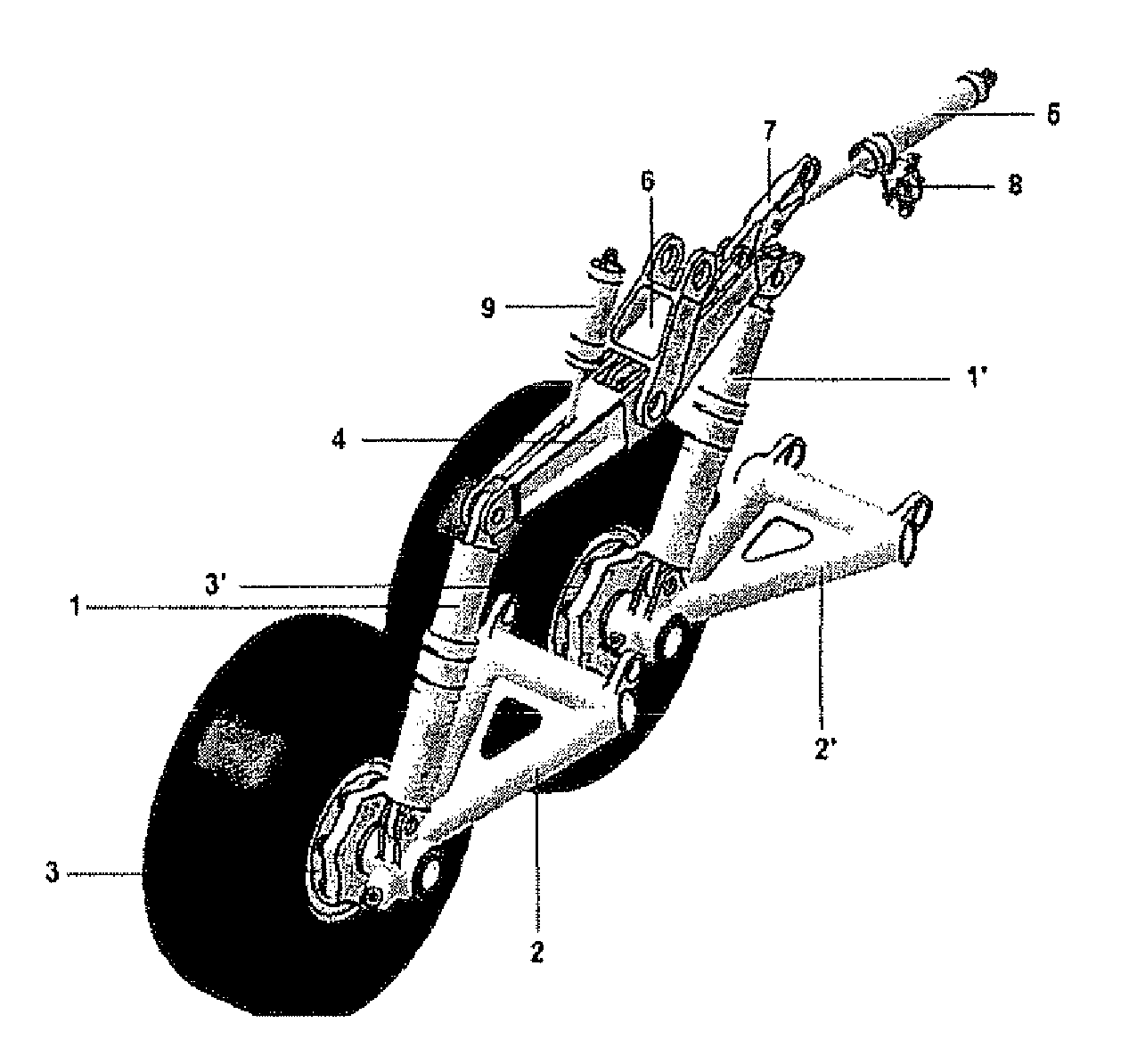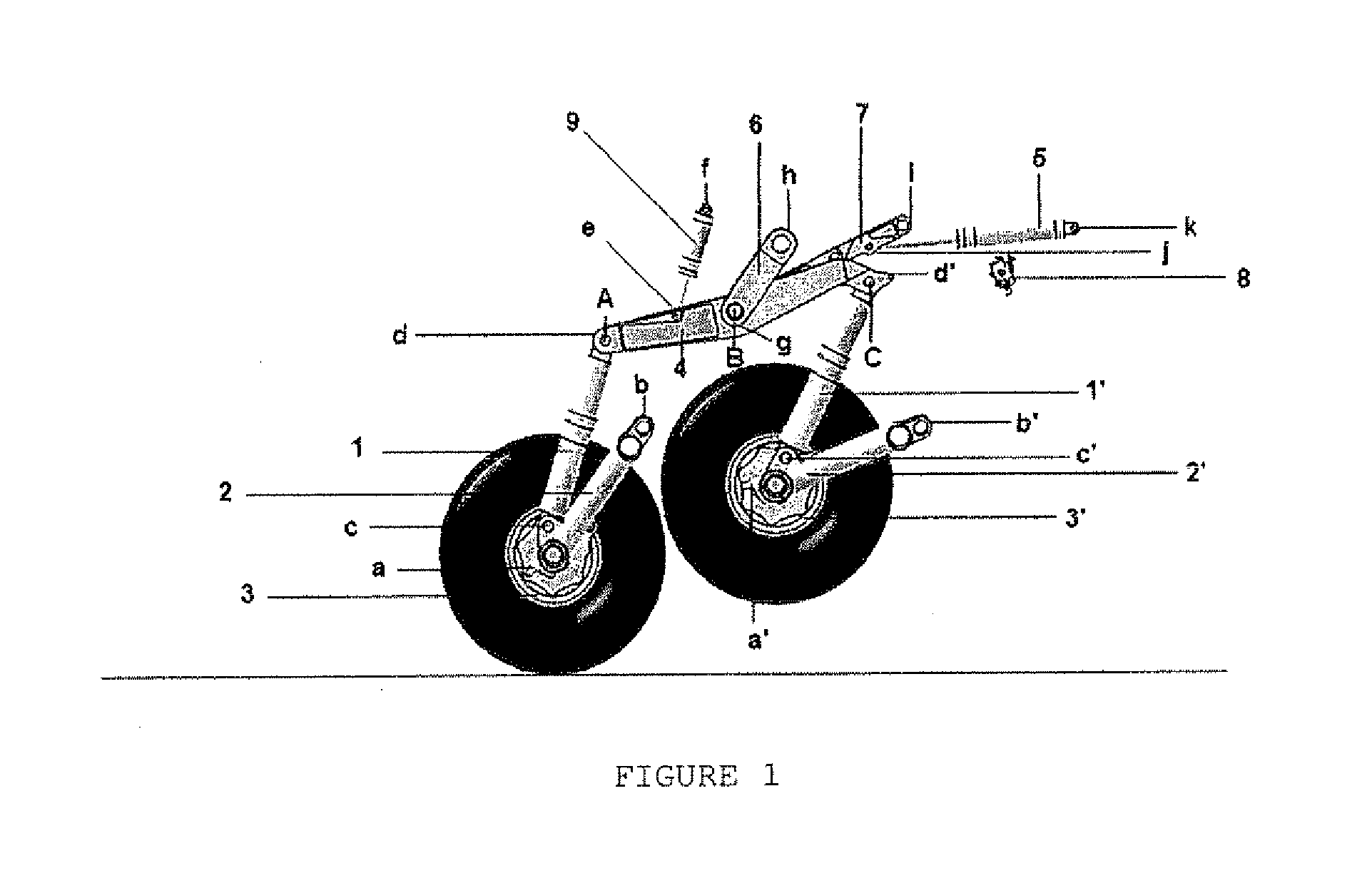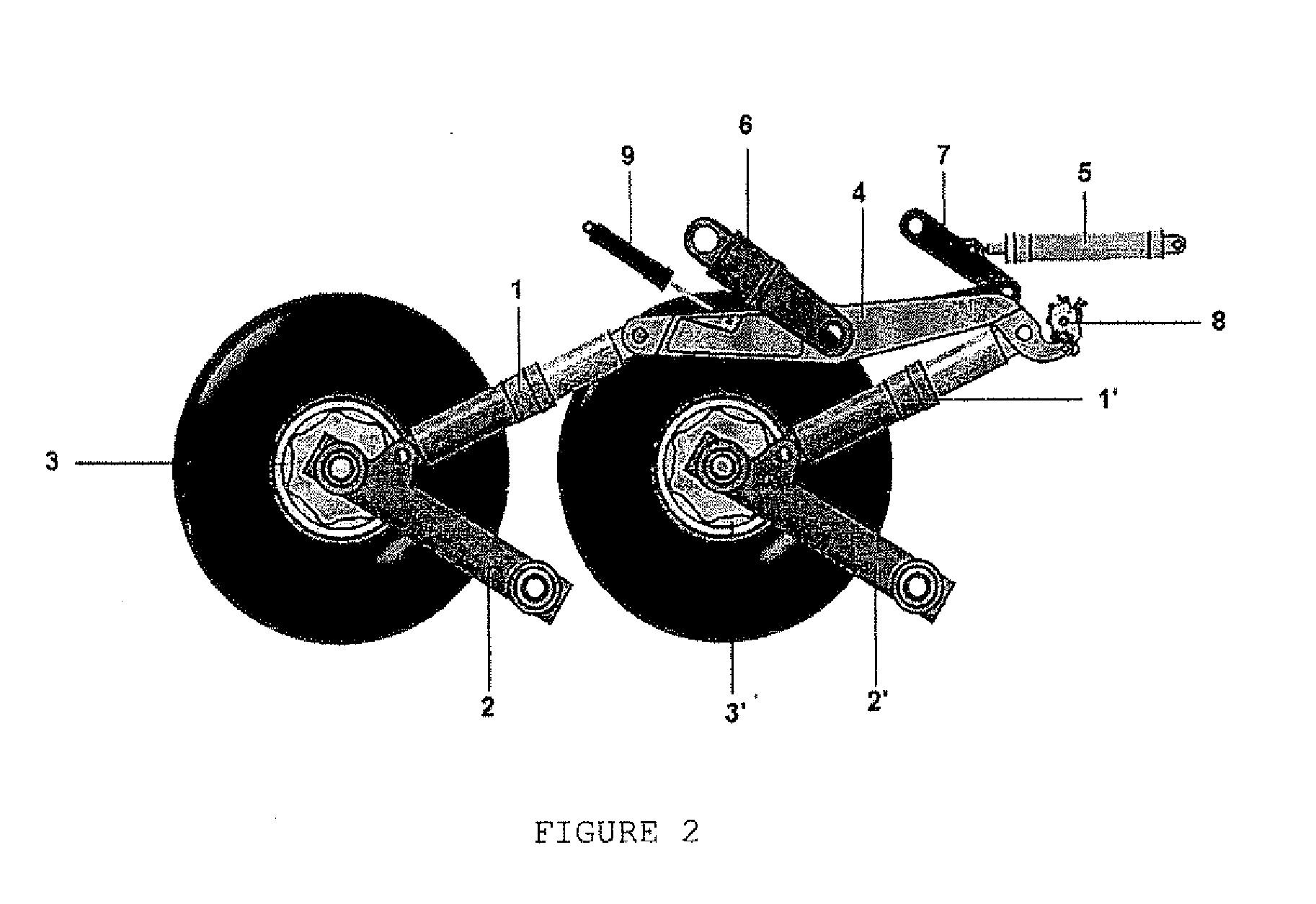Landing gear mechanism for aircraft
- Summary
- Abstract
- Description
- Claims
- Application Information
AI Technical Summary
Benefits of technology
Problems solved by technology
Method used
Image
Examples
second embodiment
FIGS. 5 to 7 show a second embodiment, designed for the present invention. In this embodiment, the maneuvering actuator 5 comprises one hinged end (p), which is connected to an upper part of the balance beam (4). The other end of the maneuvering actuator (5) is hingedly connected to the upper part of the rear bellcrank (11). The rear bellcrank (11) is indirectly and hingedly connected to the frontal bellcrank (11′) by a connecting bar (12), which is disposed below and parallel to the balance beam (4). The rear and front bellcranks (11, 11′) indirectly and hingedly link the balance beam (4) to the rear and front shock absorbers (1, 1′), respectively.
In addition, in this configuration the central part of the balance beam (4) is hingedly connected to the aircraft structure (10). Thus, the balance beam (4) does not promote a back and forth movement with respect to the horizontal plane, but only semi-rotation movements. The positioning damper element (9) interconnects the front bellcrank...
fourth embodiment
In the fourth embodiment, as well as in the third one, according to FIG. 10, the positioning damper element (9) has its second end hingedly connected to the aircraft structure (10) and its first end is hingedly connected to the arm (B1), which in turn is connected to the balance beam (4). According to FIG. 16, when the landing gear is in the retracted position, the shield (16) is positioned in front of the channel of the pin (17) through an automatic shifting, which is promoted by a torsion spring coupled to the same. The positioning of the shield (16) before the channel of the pin (17) aims to prevent the pin (17) to be extended as in FIG. 15a, when the landing gear is retracted.
FIGS. 18 and 19 show a fifth embodiment designed for the present invention. Said embodiment also comprises a first front sub-set formed by a connecting arm (2′), at least one wheel (3′) and a shock absorber (1′), and a rear sub-set formed by a connecting arm (2), at least one wheel (3) and a shock absorber ...
third embodiment
Its main feature is the arrangement of its components for locking and driving the landing gear. This arrangement is different from the previous ones, mainly the third embodiment, due to the arrangement of the semi-arms that are comprised by the locking arm (7), which will provide a force distribution between the semi-arms in a different manner between this embodiment and the third one.
According to FIG. 20, in the extended position the landing gear shows in its central region a locking arm (7) formed by the semi-arms (7a), (7b), (7c), (7d) and (7e), which are hinged to each other. At the time when the landing gear is in the extended position, said arms are disposed so that the first end of (7a) is angularly connected to the first end of (7b); the second end of (7b) is angularly connected to the first end of (7c); the second end of (7c) is connected in a straight and locked manner to the first end of (7d); the second end of (7d) is angularly connected to the second end of (7a). Moreov...
PUM
 Login to View More
Login to View More Abstract
Description
Claims
Application Information
 Login to View More
Login to View More - R&D
- Intellectual Property
- Life Sciences
- Materials
- Tech Scout
- Unparalleled Data Quality
- Higher Quality Content
- 60% Fewer Hallucinations
Browse by: Latest US Patents, China's latest patents, Technical Efficacy Thesaurus, Application Domain, Technology Topic, Popular Technical Reports.
© 2025 PatSnap. All rights reserved.Legal|Privacy policy|Modern Slavery Act Transparency Statement|Sitemap|About US| Contact US: help@patsnap.com



